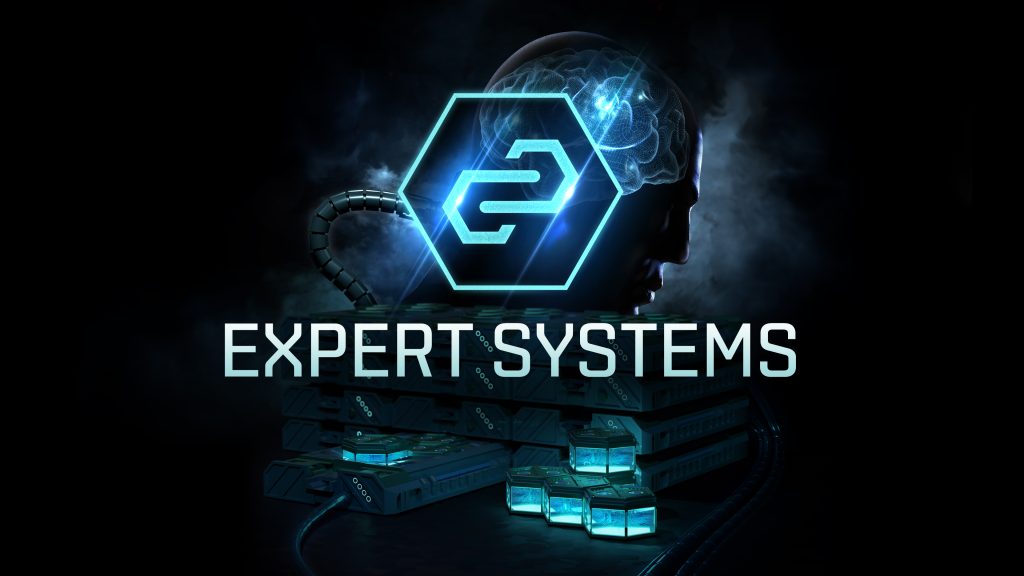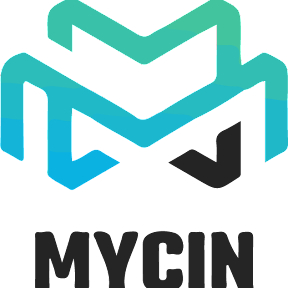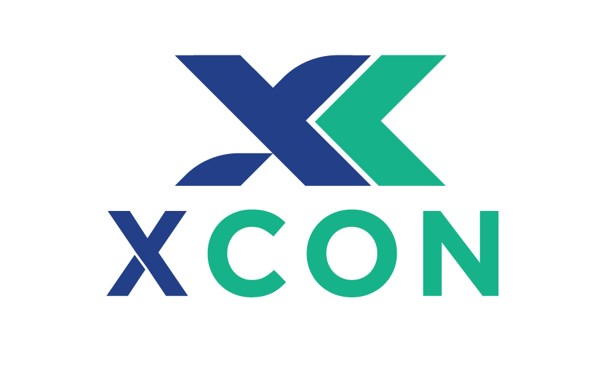
What is an expert system?
An expert system is a computer program that uses artificial intelligence (AI) technologies to simulate the judgment and behavior of a human or an organization that has expertise and experience in a particular field. Expert systems are usually intended to complement, not replace, human experts. The concept of expert systems was developed in the 1970s by computer scientist Edward Feigenbaum, a computer science professor at Stanford University and founder of Stanford’s Knowledge Systems Laboratory. The world was moving from data processing to “knowledge processing,” Feigenbaum said in a 1988 manuscript. That meant computers had the potential to do more than basic calculations and were capable of solving complex problems thanks to new processor technology and computer architectures, he explained.
Here is a list of 10 notable expert systems:
- MYCIN
- Dendral
- XCON
- PROSPECTORINTERNIST/CADUCEUS
- R1/XCON
- CASNET
- MYCROFT
- PROLOG
- Deep Blue
1. MYCIN

MYCIN is a pioneering expert system developed at Stanford University in the 1970s. It was designed to assist in the diagnosis and treatment of bacterial infections, specifically focusing on infections in the bloodstream. The development of MYCIN was led by Edward Shortliffe, Bruce Buchanan, and colleagues. It was one of the earliest successful applications of expert systems in the medical field. MYCIN utilized a rule-based approach, with a knowledge base containing a vast amount of information obtained from expert physicians and microbiologists.
Key features:
- Rule-Based Reasoning: MYCIN utilized a rule-based approach, where a knowledge base consisted of a collection of if-then rules. These rules encoded the expertise of human specialists, defining relationships between symptoms, diseases, and treatment options.
- Uncertainty Handling: MYCIN incorporated a mechanism to handle uncertainty and incomplete information. It employed certainty factors to represent the degree of confidence in the conclusions and recommendations it generated. Certainty factors allowed MYCIN to deal with uncertain or conflicting evidence.
- Explanation and Justification: MYCIN had a built-in capability to explain its reasoning process and justify its conclusions. This feature was crucial in gaining user trust and acceptance. MYCIN could provide explanations for why certain conclusions were reached and present the evidence or rules that influenced its recommendations.
2. Dendral

Dendral is one of the earliest and most influential expert systems, developed in the 1960s at Stanford University. It focused on the domain of organic chemistry, specifically the interpretation of mass spectrometry data. The development of Dendral was led by Edward Feigenbaum, Joshua Lederberg, and their team. The goal was to create a computer program that could analyze mass spectrometry data and propose possible chemical structures for organic compounds.
Key features:
- Knowledge Representation: Dendral utilized a knowledge base that stored information about organic chemistry, including rules, facts, and heuristics. This knowledge base encoded the expertise of human chemists and was structured to represent relationships between chemical compounds, their properties, and the experimental data obtained from them.
- Inference and Reasoning: Dendral employed inference and reasoning techniques to deduce the likely molecular structure of a compound based on experimental data. It used a rule-based approach, applying logical rules to analyze the input data and generate hypotheses about the compound’s structure.
- Mass Spectrometry Data Analysis: Dendral specialized in analyzing mass spectrometry data, which provides information about the masses and relative abundances of ions produced by a chemical compound. Dendral’s reasoning process involved interpreting mass spectrometry data and using it as evidence to determine the structure of the compound.
3. XCON

XCON (Expert Configurator) is an influential expert system developed by Digital Equipment Corporation (DEC) in the 1980s. It was designed to automate the configuration of computer systems, specifically DEC’s VAX computers. Before the advent of XCON, configuring computer systems was a complex and time-consuming task that required manual intervention from highly skilled technicians. XCON aimed to streamline this process by utilizing expert knowledge and decision-making algorithms.
Key features:
- Rule-Based Reasoning: XCON utilized a rule-based approach, where a knowledge base consisted of a collection of if-then rules. These rules encoded the expertise of human configurators and defined relationships between components, compatibility constraints, and configuration options.
- Configuration Knowledge: XCON had an extensive knowledge base containing information about computer hardware and software components, their specifications, and their compatibility with each other. This knowledge base allowed XCON to make informed decisions when configuring a computer system.
- Compatibility Checking: XCON performed comprehensive compatibility checks to ensure that the selected components and configurations were consistent and compatible. It verified that the chosen combination of components satisfied all the constraints and requirements specified in the rules.
4. Prospector
PROSPECTOR is an expert system developed for mineral exploration in the 1980s. It aimed to assist geologists in identifying potential mining sites based on geological data and knowledge. The development of PROSPECTOR was led by Douglas Smith and his team at Stanford University. The system incorporated principles from the field of economic geology and utilized knowledge and expertise from experienced geologists.
Key features:
- Rule-Based Reasoning: PROSPECTOR utilized a rule-based approach, where a knowledge base consisted of a collection of if-then rules. These rules encoded the expertise of geologists and defined relationships between geological features, mineralization patterns, and exploration indicators.
- Geologic Knowledge: PROSPECTOR had a comprehensive knowledge base that contained geological information, including geological maps, rock types, mineral occurrences, and exploration data. This knowledge base provided the system with a foundation for reasoning and decision-making in mineral exploration.
- Data Integration: PROSPECTOR integrated multiple sources of data, including geological surveys, geochemical analyses, geophysical data, and drill hole data. It combined and analyzed these diverse data types to identify potential mineral deposits and exploration targets.
5. INTERNIST/CADUCEUS
INTERNIST/CADUCEUS is a notable expert system developed in the 1980s for medical diagnosis and decision support in internal medicine. It aimed to assist physicians in diagnosing complex medical cases and providing treatment recommendations. The development of INTERNIST/CADUCEUS was led by Dr. Harry Pople and his team at the University of Pittsburgh. The system was built using the knowledge engineering methodology, which involved eliciting and organizing the knowledge of expert physicians in the domain of internal medicine.
Key features:
- Knowledge Representation: INTERNIST/CADUCEUS has a knowledge base that encompasses a vast amount of medical information, including disease symptoms, patient history, laboratory results, and treatment options. This knowledge base is structured to capture the expertise of medical specialists and is continuously updated with new research and clinical findings.
- Diagnostic Reasoning: INTERNIST/CADUCEUS employs sophisticated diagnostic reasoning techniques to analyze patient data and generate potential diagnoses. It applies pattern recognition, probability analysis, and causal reasoning to match symptoms and test results with known disease patterns and identify likely conditions.
- Uncertainty Management: INTERNIST/CADUCEUS can handle uncertainty and incomplete information in the diagnostic process. It uses probability theory and statistical models to quantify the likelihood of different diagnoses based on available evidence. The system can provide confidence levels for its recommendations, taking into account the uncertainty inherent in medical diagnosis.
6. R1/XCON
R1/XCON, also known as R1 or Rule One Expert System, is an influential expert system developed by Digital Equipment Corporation (DEC) in the 1980s. It was an evolution of the earlier XCON (Expert Configurator) system, which focused on configuring computer systems. R1/XCON expanded upon the capabilities of XCON and aimed to automate a broader range of tasks beyond system configuration. It served as a general-purpose expert system framework that could be applied to various problem domains within DEC.
Key features:
- Rule-Based Reasoning: R1/XCON utilized a rule-based approach, where a knowledge base contained a large number of if-then rules. These rules encoded the expertise of system configurators and captured the relationships between various hardware and software components, compatibility constraints, and configuration options.
- Product Customization: R1/XCON focused on customizing computer systems to meet specific customer requirements. It had knowledge about DEC’s product line and could suggest appropriate combinations of hardware and software based on customer needs.
- Configuration Knowledge: R1/XCON had an extensive knowledge base that contained information about DEC’s product catalog, including specifications, compatibility constraints, pricing, and availability of components. This knowledge base allowed R1/XCON to accurately configure systems that met the customer’s requirements.
7. Watson
Watson is an artificial intelligence system developed by IBM. It gained widespread recognition when it competed on the popular quiz show Jeopardy! in 2011, where it defeated two former champions. Watson is designed to process and understand natural language, enabling it to answer questions and provide insights across various domains. Watson incorporates several AI technologies, including natural language processing, machine learning, and deep learning. It has a vast amount of structured and unstructured data at its disposal, including encyclopedias, books, articles, websites, and other textual sources. Watson’s architecture allows it to analyze and understand complex language patterns, interpret context, and generate responses.
Key features:
- Natural Language Processing (NLP): Watson utilizes advanced NLP techniques to understand and interpret human language. It can analyze unstructured text, including documents, articles, and social media posts, to extract meaning, identify entities, and understand the context.
- Question-Answering: Watson is capable of answering complex questions posed in natural language. It can comprehend the question, break it down into its components, search through its knowledge base, and generate accurate and relevant answers.
- Knowledge Representation: Watson maintains a vast knowledge base that includes a wide range of structured and unstructured data from various sources, such as books, journals, websites, and databases. It can extract and organize information from these sources to provide contextually relevant insights.
8. MYCROFT
Mycroft is an open-source voice assistant and AI platform that aims to provide an alternative to commercial voice assistants like Amazon Alexa, Google Assistant, and Apple Siri. It was first released in 2015 by a company called Mycroft AI. Unlike proprietary voice assistants, Mycroft is designed to be customizable and transparent. It can be installed on a variety of devices, including computers, Raspberry Pi, smart speakers, and even in-car systems. The platform is built using open-source software and allows users to modify and extend its capabilities to suit their specific needs.
Key features:
- Voice Interaction: Mycroft enables users to interact with their devices using natural language voice commands. Users can ask questions, give instructions, and request information, making it a hands-free and convenient way to interact with technology.
- Privacy-Focused: Mycroft emphasizes privacy and data ownership. Unlike some commercial voice assistants, Mycroft does not send voice data to the cloud for processing. It operates locally, ensuring that user interactions and data remain private.
- Open Source: Mycroft is an open-source project, which means its source code is freely available for modification and contribution by the community. This open nature encourages collaboration and innovation, allowing developers to customize and extend Mycroft’s capabilities.
9. PROLOG
Prolog (PROgramming in LOGic) is a logic programming language widely used in artificial intelligence (AI) and computational linguistics. It was developed in the early 1970s by Alain Colmerauer and his colleagues. Prolog is based on a declarative programming paradigm, where programs are expressed as a set of logical rules and facts. It allows developers to define relationships, rules, and constraints and then use logical queries to evaluate and infer information from these rules.
Key features:
- Logic Programming Paradigm: PROLOG follows the logic programming paradigm, where programs are written in terms of logical statements and rules. It allows programmers to focus on describing the problem domain and the relationships between entities rather than specifying the control flow or step-by-step execution.
- Horn Clauses and Predicates: PROLOG programs are built using Horn clauses, which consist of a head and a body. The head represents a predicate, and the body contains logical conditions. Predicates define relationships between objects and can be used to query the knowledge base.
- Rule-Based Inference: In PROLOG, the reasoning is based on a set of rules and facts. The system performs backward chaining, starting from the goal or query and attempting to find the rules that match the query, recursively traversing the rules until a solution is found.
10. Deep Blue
Deep Blue was a highly advanced chess-playing computer system developed by IBM. It is best known for its historic victory over world chess champion Garry Kasparov in a six-game match held in 1997. Deep Blue was a culmination of years of research and development by a team of computer scientists and chess experts. It employed a combination of powerful hardware and sophisticated algorithms to analyze chess positions and make decisions.
Key features:
- Chess-Specific Algorithms: Deep Blue incorporated specialized chess algorithms and heuristics to evaluate and analyze positions. These algorithms included advanced search techniques, position evaluation functions, and move generation methods tailored for chess-specific characteristics.
- Massive Parallel Processing: Deep Blue utilized a massively parallel processing architecture, consisting of hundreds of custom-designed chess chips working in parallel. This allowed it to perform extensive calculations and search large portions of the chess game tree to determine the best moves.
- Search and Evaluation: Deep Blue employed a combination of search algorithms, including the alpha-beta pruning algorithm and selective search techniques. It explored different lines of play by analyzing potential moves and their subsequent positions, evaluating the strength and strategic value of each position.
[…] Top 10 Expert Systems […]